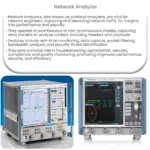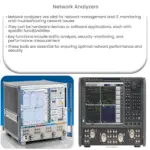Introduction to X.25
X.25 is a packet-switched communication protocol that was originally developed in the 1970s by the International Telegraph and Telephone Consultative Committee (CCITT), now known as the International Telecommunication Union Telecommunication Standardization Sector (ITU-T). X.25 was designed to provide reliable communication between remote devices over public networks, such as dial-up connections and leased lines. It was widely used in the 1980s and 1990s as a standard for connecting data terminals and remote computers.
X.25 is based on the concept of virtual circuits, which establish a logical connection between two devices over a network. Unlike a physical circuit, which requires a dedicated connection between two devices, a virtual circuit is a logical connection that can be established and disconnected as needed. X.25 also uses a layered architecture, with the lower layers responsible for transmitting data over the network and the higher layers responsible for managing the flow of data between devices.
X.25: A Brief History
X.25 was first introduced in the 1970s as a standard for connecting remote devices over public networks. It quickly gained popularity due to its reliability and compatibility with a wide range of devices. In the 1980s and 1990s, X.25 was widely used in the financial industry for connecting ATMs and point-of-sale terminals, as well as in the telecommunications industry for connecting remote networks.
However, with the advent of faster and more reliable networking technologies, such as frame relay and later, the Internet, X.25 began to decline in popularity. Today, X.25 is still used in some specialized applications, such as in the aviation industry for connecting air traffic control systems.
Key Features and Benefits of X.25
One of the key features of X.25 is its ability to provide reliable communication over unreliable networks. X.25 uses a variety of error detection and correction techniques to ensure that data is transmitted correctly, even in the presence of noise and other disturbances on the network. X.25 also provides flow control and congestion control mechanisms, which help to prevent network congestion and ensure that data is transmitted at an appropriate rate.
Another benefit of X.25 is its flexibility and compatibility with a wide range of devices. X.25 supports a variety of data transmission rates, ranging from 50 bits per second to 2 megabits per second, as well as a variety of data link layer protocols. This makes it a popular choice for connecting legacy devices and systems that may not be compatible with newer networking technologies.
Example Applications of X.25
One of the most common applications of X.25 is in the financial industry, where it is used to connect ATMs and point-of-sale terminals to banking networks. X.25 provides a reliable and secure connection for transmitting sensitive financial data, such as account balances and transaction details.
In the aviation industry, X.25 is used to connect air traffic control systems, providing a reliable and secure means of communication between control towers and aircraft. X.25 is also used in some military and government applications, where reliability and security are of utmost importance.
While X.25 is no longer as widely used as it once was, it still plays an important role in some specialized applications where reliability, security, and compatibility with legacy systems are critical.




